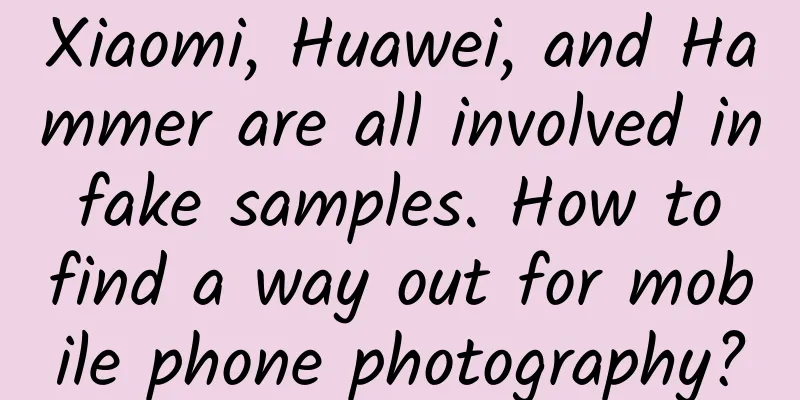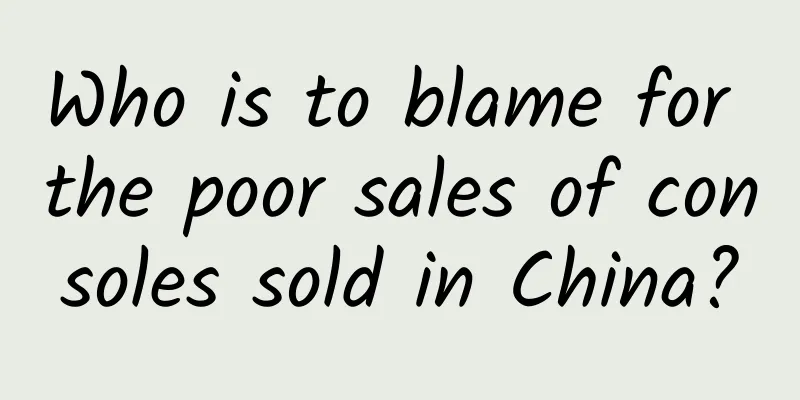Xiaomi, Huawei, and Hammer are all involved in fake samples. How to find a way out for mobile phone photography?

|
16 years ago, Sharp released the first mobile phone equipped with a camera, J-SH04. Since then, mobile phones are no longer just communication devices, and the camera function has become one of the selling points of mobile phones. After the rapid development of smartphones and their homogenization, the camera capability has become a powerful tool for many manufacturers to boast about themselves and belittle their competitors at press conferences. But the reality is that the practice of fake sample photos has become rampant in the mobile phone industry. 1. Counterfeiting of mobile phone samples has become an unspoken rule From the promotional pictures of many manufacturers, we can see that the samples taken by their mobile phones are comparable to SLRs in terms of color reproduction, detail expression, and tolerance. But the simple logic is that if mobile phones can take such high-quality photos, digital cameras would have been killed long ago. The counterfeiting scandals that have broken out in recent years have also shown that many of the sample photos used in mobile phone promotions are (suspected to be) fake photos taken with digital cameras. In 2012, Nokia, which is famous for its photography, was exposed for faking Lumia 920 sample photos. After analyzing the sample photos released by Nokia, some photography enthusiasts found that these photos could only be taken with a digital camera. For example, the halo effect of a certain photo can only be taken with a small aperture and a longer shutter speed, while the lighting effect of another photo requires a large aperture of f/2.0. The embarrassing fact is that the aperture of the mobile phone cannot be adjusted, so one of these two photos must be a lie. Of course, since the sample photos do not contain any EXIF information, we do not have definite evidence that they used professional cameras to fake them, but their fraudulent behavior of using fill-light equipment to improve the quality of night-time sample photos was caught by a netizen. Nokia caught posing for photos 2014 was the year when scandals of fake samples of domestic smartphones broke out. First, in March, the sample photos shown at the IUNI U2 launch conference were revealed to have been shot with a Sigma camera and taken as far back as 2008. Soon after, some netizens discovered that the three T1 sample photos displayed on the Hammer official website seemed to have been processed with photo editing software. By checking the exif information, some users were surprised to find that it contained the words "Creation Software ACDSee Pro 6", so they suspected that the so-called Hammer phone samples were reprocessed by ACDSee, leaving some traces. Because of this, Luo had to come out to explain that it was a disguise of the camera firmware before the release to keep it confidential, but netizens did not buy it. Later, some media found problems in the samples taken by Xiaomi 4 and displayed on Xiaomi's official website. From the shadows of the characters' arms and the position of the eye light in the photos, they inferred that the photos were taken with a professional digital camera. Of course, Xiaomi did not admit it. The latest protagonist of the fake sample scandal is the domestic mobile phone giant Huawei. At the beginning of last month, the promotional photos of Huawei P9 in China were exposed to be fake because they used pictures taken by netizens, which triggered a round of public criticism, and Yu Chengdong had to personally express his position. Just one month later, a photo posted by Huawei on Google+ caused another controversy. This photo, shot with a SLR camera and with excellent details, was cryptically linked to the Huawei P9 Leica-certified camera. This time, Huawei's overseas department did not even remove the EXIF information of the photo, and the information of the Canon EOS 5D Mark III was listed. Huawei had to delete the photo embarrassingly afterwards. With so many fraudulent acts, we have to wonder why mobile phone manufacturers always tamper with sample photos? 2. Why do manufacturers fake samples? In the early days, mobile phone camera was just a function that was better than nothing. Later, with the participation of Japanese and Korean manufacturers, relying on their accumulation in digital imaging, mobile phone camera gradually became practical. When it developed to 2 million pixels, there was a camera phone product such as Sony Ericsson K750C that could truly record life. After that, the camera capabilities of smartphones evolved rapidly, from 2 million to 3.2 million, 5 million, 8 million, 13 million, and 16 million. In this process, mobile phone cameras have also become a big industry, monopolized by several upstream manufacturers from CMOS to modules. In the era of 2 million to 5 million, there were few upstream manufacturers providing cameras on the market. Japanese companies rely on their own camera manufacturers to transfer technology, and Nokia is on the list of Carl Zeiss. By the 8-megapixel and 13-megapixel eras, the products on the market were basically the same, with CMOS from Sony and OV, and modules from Sunny Optical and Sharp. There are four main factors that affect the imaging quality of mobile phones: lens module, CMOS, ISP, and software processing. Nowadays, the lens modules and CMOS of mobile phone manufacturers are all integrated accessories, and the ISP is integrated in the SOC. Fewer and fewer manufacturers are willing to use independent ISPs, and the remaining software can actually be improved very limitedly. That is to say, as long as the mobile phones on the market are not too shoddy, the difference in photo quality is not big. The upstream suppliers determine the photo quality. Mobile phone manufacturers often use mobile phone photography as a selling point to promote themselves as better than their competitors. The problem is that the hardware foundation is not that good. What to do? Just use the photos taken with the SLR to make up the number. So, we saw that IUNI’s website directly used SLR photos to make up the number, and Xiaomi’s gallery used SLR photos to make up the number. Huawei was also bombarded this time. The truth is, no matter what certification you have or how you brag, your solution is given by the upstream, and the level of upstream Sunny Optical and Sony determines how good your photos are. There is not much that mobile phone manufacturers can do. Exaggerating your own photo quality can only rely on publicity, and once the moral integrity is a little bit worse, fraud will appear. 3. Can mobile phones really achieve the same photography effects as SLR cameras? There is a niche digital website in China called Digital Duo, which was created by Brother Xia Kungang. This website has beautiful samples of photos taken with mobile phones. In fact, the potential of mobile phone photography is still very large. In history, there have been many smartphones with excellent photography capabilities. Nokia has launched a famous product, Nokia 808, and Panasonic has also launched a smartphone with high photography level, CM1. Let’s take Nokia 808 as an example to see how high-level camera phones are performed. First of all, the lens of Nokia 808 is not a common product from upstream module manufacturers, but a customized product specially developed in cooperation with Carl Zeiss. Carl Zeiss laboratory has conducted rigorous tests on this lens. This lens even uses high-cost low-dispersion film. In terms of CMOS, the popular size was 1/3 inch, while Nokia 808 used 1/1.2 inch. The photosensitive element was one level larger, and it was more than one level larger. Although Nokia used the very backward FSI, the effect was still excellent. Even in 2016 when CMOS technology has made great progress, Nokia 808 is still considered high quality. In terms of signal processing, the CMOS of Nokia 808 is not integrated into the SOC, but purchased separately. On the one hand, this ensures the image quality, and on the other hand, it provides the ability of oversampling pixel synthesis. Each core component is not made in China, but is customized according to its own understanding of images, which will produce outstanding results. In the comparison of the foreign website Gsmarena, the resolution of ordinary high-level camera phones is far inferior to that of the Nokia 808 using this lens. Similarly, Panasonic's CM1 uses a special lens and a 1-inch 20-megapixel CMOS. In fact, although the small lenses of mobile phones are cheap, Carl Zeiss Laboratory believes that small lenses can actually be made of very high quality because there is no need to consider the thermal expansion and contraction of plastics. Coupled with the advancement of CMOS in recent years, today's smartphones, in the hands of people who know how to take pictures, can produce photos that are no less effective than SLR cameras from many years ago in some well-lit environments. If we use the idea of customization, as long as we replace the outdated FSI CMOS of Nokia 808 with today's ISOCELL, and keep the 1.4um and 41 million pixels unchanged, the image quality will be greatly improved. Not only can it be compared with SLRs from 10 years ago, but it can also compete with those from 5 years ago. Due to the size factor, mobile phone photography has its limits, but this limit is far from being reached. Therefore, although mobile phone photography cannot achieve the effect of contemporary SLRs, it can still have high quality. Finally, for manufacturers, fake is fake. If the upstream does not customize, there will be no flowers. Aspiring manufacturers can seek cooperation with upstream resources. Don't just ask Leica for certification and let Leica help design the lens. Only by finding manufacturers to customize the production can you really widen the gap. If Nokia could do it back then, why can’t Chinese manufacturers do it today? As a winner of Toutiao's Qingyun Plan and Baijiahao's Bai+ Plan, the 2019 Baidu Digital Author of the Year, the Baijiahao's Most Popular Author in the Technology Field, the 2019 Sogou Technology and Culture Author, and the 2021 Baijiahao Quarterly Influential Creator, he has won many awards, including the 2013 Sohu Best Industry Media Person, the 2015 China New Media Entrepreneurship Competition Beijing Third Place, the 2015 Guangmang Experience Award, the 2015 China New Media Entrepreneurship Competition Finals Third Place, and the 2018 Baidu Dynamic Annual Powerful Celebrity. |
<<: Tencent invested in Toutiao? Here are three questions
>>: “Pokemon GO” is popular, but is this the right approach to commercializing AR?
Recommend
What is content marketing? Let me help you think about the three core issues of content marketing
This article will take you through three core iss...
Can drinking weakly alkaline mineral water help you give birth to a son? Don’t believe it anymore…
gossip "Drinking weak alkaline mineral water...
For those who are new to ASO operations, how to do ASO!
If you want to do your work well, you must first ...
Marketing promotion: innovative ways to achieve big marketing with a small budget!
Can’t you do marketing without money? By masterin...
Build a user operation system in 5 steps!
User operation is an invisible skill that many ne...
Baidu Cloud OS is dead, LeEco may usher in the era of ecological mobile phones
Recently, the Baidu Cloud OS R&D team, which ...
Taobao live streaming methodology!
Brands’ self-broadcasting on Tmall presents both ...
I don’t understand the recommendation mechanism of the video account. How can I increase my followers and realize monetization?
For creators who want to make their video account...
The new generation of Google Glass actually takes pictures like this
According to a Google patent document, Google Gla...
China Unicom's Cai Xiyan: Breaking the bottleneck of network coverage and traffic will accelerate the development of the short video industry
In 2017, the wave of live streaming is fading, an...
Xinyi SEO Training: What are the common ways to obtain external links?
SEOers who are engaged in website optimization wo...
Practical Tips | How to create an April Fools' Day event with 500,000 PVs in 3 days with 1,000 yuan!
The biggest phenomenon-level event on April Fools...
An octopus holds hands with a diver. Is this Cthulhu preaching?
Octopus is a general term for more than 300 speci...
How should brands measure the effectiveness of advertising on TikTok?
Short videos have become popular, and a question ...
Under the curled and yellowed leaves, a "war" is taking place
Produced by: Science Popularization China Author:...









